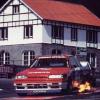New Vq35hr And Vq25hr Engines For V36
Announcements
-
Similar Content
-
Latest Posts
-
By BourneToLive · Posted
Correction. Ignition was on before, but I guess the car had to be running for it to work. -
The stock ECU won't care. The gains from Nistuning the ECU and then "optimising" the fuel and ignition tables will be about 2 more HP.
-
By GabsReDeal · Posted
Appreciate the feedback. It is street car, but not a daily. Last week I got a quote from a good exhaust shop for a decat, one which is bolt-on, bolt-off to be easily replaceable. I got quoted for around €150. I usually do push the motor, but I wasn't in this case to make sure that no damage is done until I get the cat sorted. I think it's best to also ask the exhaust shop for the other option and see what they can do. If (big if) I were to decat though, would it be best to tune the car or would the stock ECU handle it? As far as I know, the stock ECU is not tunable and that would require additional purchases. -
As above, definitely bash it or get it replaced with a high flow unit.
-






Recommended Posts
Create an account or sign in to comment
You need to be a member in order to leave a comment
Create an account
Sign up for a new account in our community. It's easy!
Register a new accountSign in
Already have an account? Sign in here.
Sign In Now